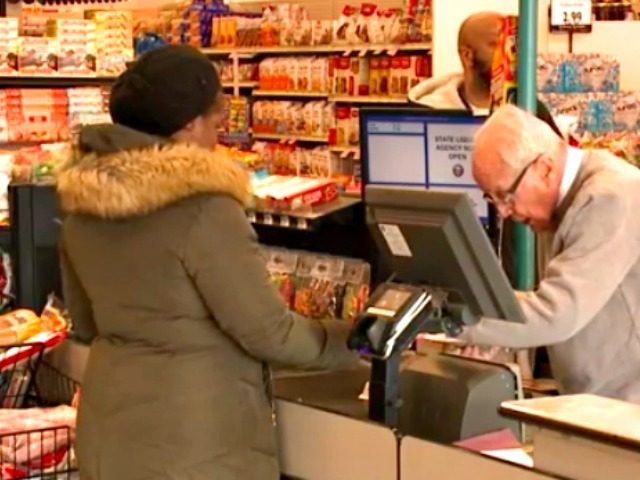The Trump administration proposed a plan that would deliver food items to food stamp recipients as part of their benefits package.
The U.S. Department of Agriculture (USDA) noted that under the plan, which is included in the 2019 budget, those receiving more than $90 a month in benefits would receive “nutritious, U.S.-grown and produced food” in a “Harvest Box” that would make up half of a recipient’s allotted benefits for the month. The rest of the benefits would be placed on electronic benefit transfer (EBT) cards for use at grocery stores as is allowed under the current SNAP system.
Budget Director Mick Mulvaney described the Trump administration’s “Harvest Box” proposal as a “Blue Apron-style program” where recipients receive food instead of cash vouchers.
The agency estimates that 16.4 million households enrolled in the Supplemental Nutrition Assistance Program (SNAP) —about 81 percent of SNAP enrollees—would be affected by this policy.
Agriculture Secretary Sonny Perdue said in a statement:
USDA America’s Harvest Box is a bold, innovative approach to providing nutritious food to people who need assistance feeding themselves and their families — and all of it is homegrown by American farmers and producers. It maintains the same level of food value as SNAP [Supplemental Nutrition Assistance Program] participants currently receive, provides states flexibility in administering the program, and is responsible to the taxpayers.
The USDA estimates that the proposal would save $129.2 billion over a period of ten years, would decrease food stamp fraud, and would enhance the nutrition content of the program.
Some food policy advocates questioned whether the Trump administration’s proposal would save the government money if the government were in charge of handling distribution, and expressed concern over how much choice SNAP recipients would have in what types of food they would receive.
“It’s a risky scheme that threatens families’ ability to put food on the table,” said Stacy Dean, vice president for food assistance policy at the left-leaning Center on Budget and Policy Priorities.
A spokesperson for the agency told Breitbart News that individual states would determine what food suppliers to use for the boxes, how the food is distributed, and would be able to “regulate specific contents of the boxes.” The USDA spokesperson did not specify, however, whether recipients would have any choice in what is placed in the boxes.
The “Harvest Box” idea is based on an existing program known as the Commodity Supplemental Food Program, which utilizes local agencies and nonprofits to help distribute food boxes to “low-income elderly persons” who are at least 60-years-old. The program began under the Agriculture and Consumer Protection Act of 1973, which the Nixon administration authorized.

COMMENTS
Please let us know if you're having issues with commenting.